9.8 /10 1 Votes9.8
| 4.9/5 Emuparadise Initial release date 15 February 1991 Genre Platform game | |||||||||||||||||||||||||||||||||
Publishers Taito, Konami, Hudson Soft, Namco, Ocean Software, SNK, Working Designs, Culture Brain, Ocean Europe Limited Similar Bubble Bobble games, Hudson Soft games, Platform games | ||||||||||||||||||||||||||||||||||
Parasol Stars (パラソルスター) is a video game by Taito released in 1991. It is a sequel to Rainbow Islands (see below paragraph). It is technically the third game in the Bubble Bobble series.
Contents
- Parasol stars longplay pc engine 60 fps
- Release
- Relation to other games
- Gameplay
- Use of Lambada
- Reception
- References
Parasol stars longplay pc engine 60 fps
Release
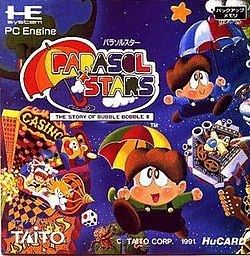
Unlike many other games in the series, Parasol Stars was never released to arcades - it was originally developed for the NEC PC Engine, and later converted to a number of other home systems. Parasol Stars was misreported as being the third coin-op in the Bubble Bobble series by many magazines at the time, and there are rumours about prototypes for an arcade version. Taito has officially stated that an arcade game was never produced. Mick West (who was the programmer of the Amiga and Atari ST versions) stated that they ported the game directly from the PC Engine by playing it and that he did not know anything about an arcade version.
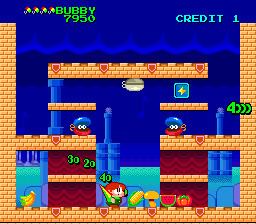
The game was released in limited quantities in North America for the TurboGrafx-16 by Working Designs. The Game Boy and NES version were published by Ocean Software in 1991, who also published the Commodore Amiga and Atari ST versions in 1992. A ZX Spectrum port was planned, but later cancelled. The game was also planned for the Commodore 64, but it was cancelled as well. Ocean initially explained that the developer's computer was stolen in a burglary, but it was later revealed that the game was scrapped after the freelance developer's wife destroyed said computer in a drunken rage, along with the backups of the work. The compilation release Bubble Bobble featuring Rainbow Islands for the Sega Saturn, Sony PlayStation, and PC was originally going to include Parasol Stars as well, but it was dropped from the lineup mid-development.
Relation to other games
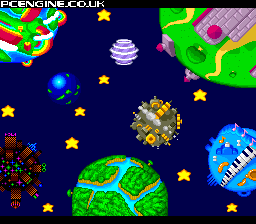
The game's subtitle is The Story of Bubble Bobble III, which was also used as the subtitle for Bubble Memories, released in arcades in 1995. Bubble Memories is a prequel (given the "Memories" part of the name) to the 1994 game Bubble Symphony, which was released as Bubble Bobble 2 in some countries. Nonetheless, Rainbow Islands is indeed the sequel to the original Bubble Bobble, even though said sequel doesn't retain the gameplay from the first. Since Bubble Memories was released years after Parasol Stars, it may be a retcon in which Parasol Stars never happened, whereby after the events of Rainbow Islands, the humans Bubby and Bobby are once again transformed into the bubble dragons Bubblun and Bobblun. However, it's also possible that Parasol Stars could be a side story, or "gaiden" to the series occurring after Rainbow Islands, but before Bubble Memories.
Gameplay
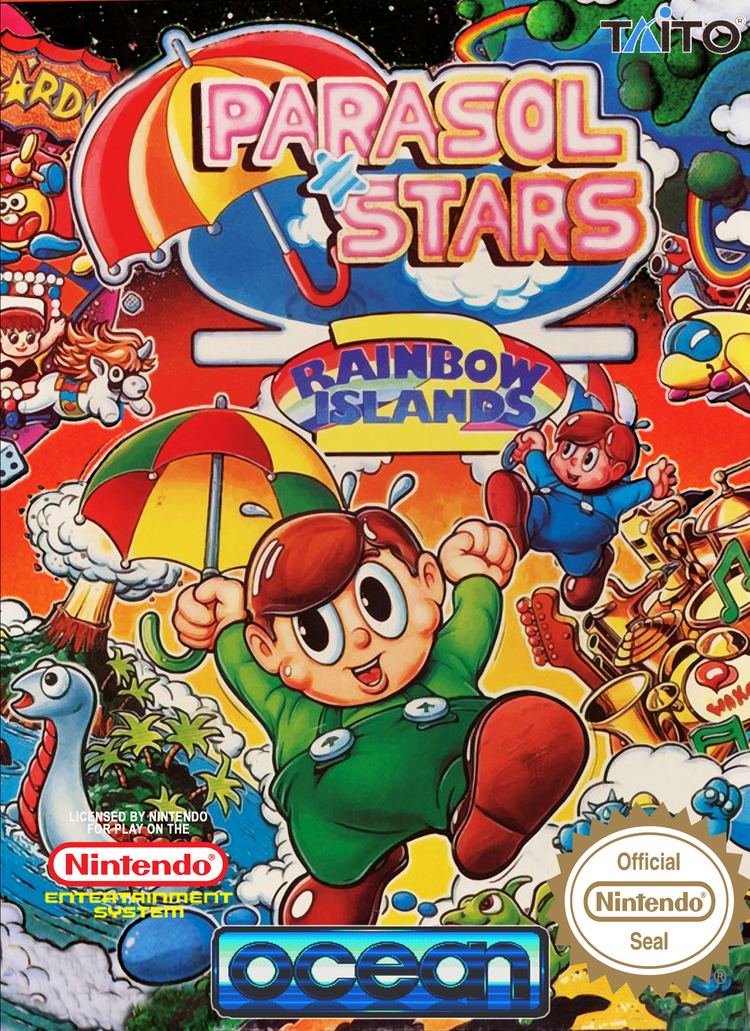
Bubby and Bobby (the characters' human names) star once again as the main characters, retaining their human forms from Rainbow Islands. However, Parasol Stars is more of a take on Bubble Bobble than it is on Rainbow Islands.
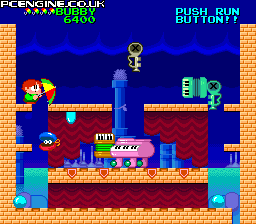
The game takes place on a number of different worlds, each with a distinct theme. Each world features seven rounds, the last one always hosting a boss that must be defeated to progress to the next world. There are eight main worlds; however, in order to complete the game properly, the player must open a secret door on the final world by collecting three of the Star items - allowing access to 2 secret worlds, themed around Bubble Bobble and Chack'n Pop that are not initially visible on the main screen. Completing these two lead to the final boss, Chaostikhan (the one responsible for stealing color from the worlds, and supposedly the mastermind behind the previous game's villains) and the true ending. According to an ACE magazine in-depth preview, the Amiga version also has a secret "Nightmare" world.
The player is armed with a parasol. While it is normally closed, the player can deploy it in two ways; either open in front of them, or open above the head. The parasol is a multipurpose device, it can block as a shield, stun enemies, capture droplets or hurl enemies. At many points it can be used as a parachute.
The rounds are simple arrangements of platforms. Almost every level has droplets which drip from points in the level. They fall under the influence of gravity and roll along the platforms within the screen. The player can capture these on their parasol and throw them at enemies.
The parasol can hold more than one droplet at once; if five are held, they merge into a large droplet with a special power. There are four different kinds of droplets, with a mostly elemental theme, some of which are inherited from Bubble Bobble.
Use of Lambada
Much like Rainbow Islands used The Wizard of Oz's song Somewhere Over the Rainbow, Parasol Stars used an official song in its soundtrack. This time it was Lambada by the French pop group Kaoma, which was used as the game's boss theme.
Reception
CU Amiga praised the game, giving it 95% and a "Super Star. Amiga Power was a little less enthusiastic, giving it 88%.
